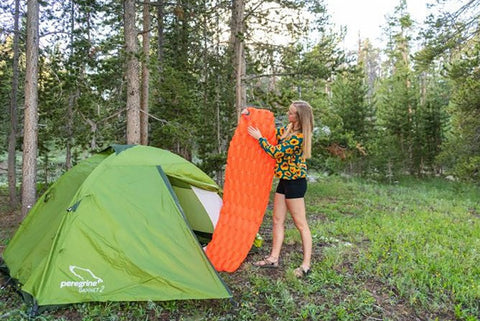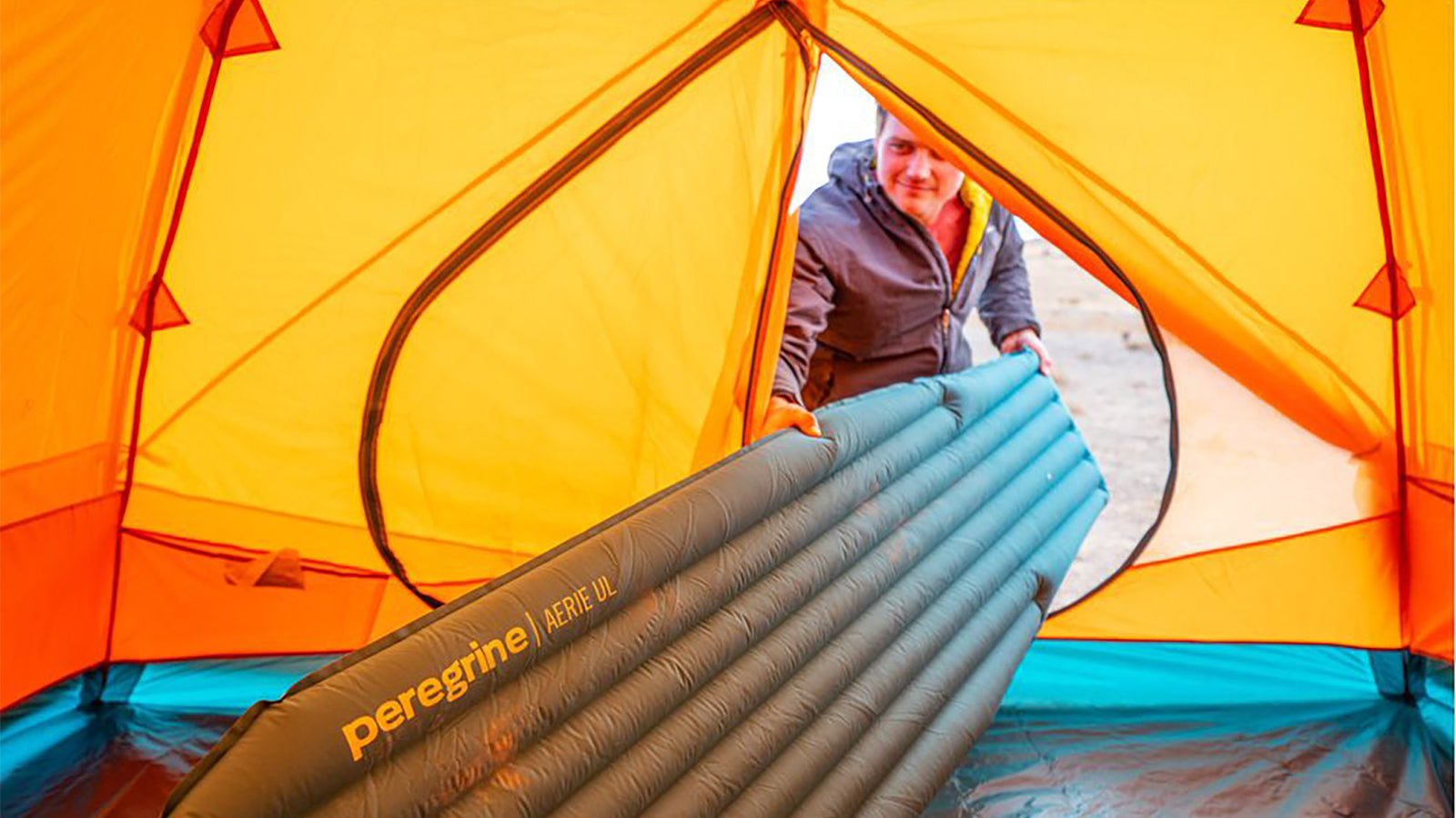A sleeping pad is one of the most important camping gears to invest in. Having the correct sleeping pad can help you ensure that you will be well insulated and cushioned, helping you achieve a good night’s sleep. Continue reading to learn about the different styles of sleeping pads available, and how to make sure that you can choose the one that’s the best fit for you.
Styles of Camping Sleeping Pads
There are four different types of sleeping pads to pick from. They all have pros and cons, so consider the factors that are the most important to you while choosing which style you want to use.

Air Pads: Air pads come in a variety of styles, from lightweight ones to extra thick ones. Air pads are comfortable and lightweight. They are also the most compact type of pad when packed. The firmness is customizable by adding or taking out air. However, air pads can be expensive, especially if they are really lightweight and compact. They also can puncture, so be sure to bring a repair kit with you.

Self-Inflating Pads: Self-Inflating pads utilize both air and open-cell foam insulation. There are backpacking and car camping pads available, depending on your needs. Self-inflating pads are comfortable, and are pretty compact. They allow you to adjust the firmness by adding or releasing air, and they also have great insulation. On the flip side, they are more expensive and heavier than foam pads, and are less compact than air pads. Since they still need to be inflated, they can puncture, so you want to make sure that you bring a repair kit with you.

Foam Pads: These pads are made of dense foam with tiny closed air cells. They are able to be rolled or folded up. They are inexpensive, durable, and lightweight. They provide you with consistent insolation as well. They are also a good choice because they do not puncture. However, they are less comfortable than other sleeping pad choices. These pads are good choices to go underneath another pad, in order to help with insulation and prevent punctures.
Air Mattress: When car camping, and not concerned about weight or space, air mattresses can be a good option. They are comfortable, and allow you to have more space. They also work well if you are looking to bring sheets and blankets instead of a sleeping bag.
However, there is still the risk of puncture, plus they are big and bulky so you want to make sure that you have enough room in your car. They do require a pump, so make sure that you have extra batteries.
Understanding R-Values
R-Values is a term that refers to how well something insulates heat. The higher the R-value of your sleeping bag, the more difficult it is for heat to escape, which means that you will stay warmer. A sleeping pad with a lower R-value means that your body heat is moving quickly into the ground. So, the lower the nighttime temperatures are, the higher your R-value on your sleeping pad should be.
Summer Camping (R-Value 1-2): Sleeping pads with R-values of 1-2 provide you with minimal insulation. These pads should be reserved for warm weather camping, where you want to prioritize weight instead of warmth. Good sleeping pad choices in this category would be foam pads or ultra-light air pads.
Spring and Fall Camping (R-Value 2-4): Sleeping pads with R-values of 2-4 are good choices for spring and fall camping trips, where the weather is subject to change. You can adjust the R-values depending on whether or not you are a warm sleeper, and how warm your sleeping bag is.
Winter Camping (R-Value 4.5 and up): Sleeping pads with R-values of 4.5 and higher are reserved for below freezing temperatures and snowy conditions. These pads will provide you with enough insulation to stay warm. While these pads are bulkier, staying warm is more of a priority than saving weight. Many backpackers will choose to stack an air pad on top of a foam pad to help with insulation.
Choosing the Right Pad for You
When choosing your sleeping pad, you want to consider what conditions you will be camping in. If you are warm weather camping you will want a pad with a lower R-value than if you are camping in the fall or winter. Also, keep in mind what type of camping you will be doing. If backpacking, you will want a light-weight option. Self-inflating or air pads are good choices for backpackers. There are also chair kits that allow your air pad to be converted into a chair during the day time. If car camping, you can choose larger and thicker self-inflating pads, since you will not be as concerned about weight and bulk. Air mattresses are also a good choice for the car camper.
Conclusion
Sleeping pads are not something that you want to skip over while planning your camping gear. Choosing the wrong one can result in you being uncomfortable. With an understanding of R-values, as well as some advantages and disadvantages of each type, you can now make an informed decision about what sleeping pad will be the best fit for you.

